Flamboyant smartphone design is the new in-thing for the industry and it’s hard to blame anyone for this trend. Present a flashy phone to the consumers and some of them might not even care what’s underneath the hood. In my opinion, Realme has been guilty of pushing the same smartphone design on consumers since the Realme XT (review) back in September. Xiaomi’s Redmi Note series, which could be considered the company’s bread and butter, has always been one to experiment with new design elements on every new iteration. I was a fan of the Redmi Note 8 Pro’s (review) design which gave the phone a more premium touch than what the price tag warranted. Now Xiaomi’s latest Redmi Note 9 Pro has won me over again simply because of its aesthetically pleasing value.
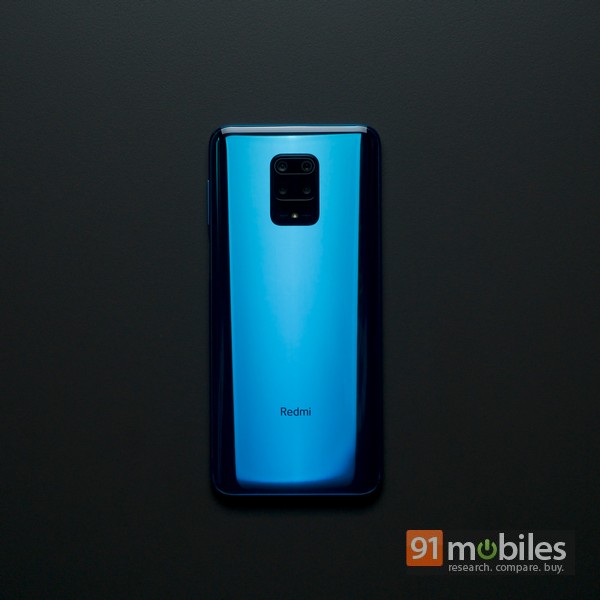
On paper, the Redmi Note name commands powerful specs with a clear focus on performance. This appears not to be the case for the Note 9 Pro. Don’t get me wrong, for a starting price of Rs 12,999, what the Note 9 Pro offers is quite spectacular and would’ve been unheard of just two years back considering even the company’s own highly remarkable standards. The competition (read Realme) has however caught up, and it has time and time again upended the budget smartphone segment held so dearly by Xiaomi till 2018. With the Note 9 Pro Max also in the fray, I have dissected what Xiaomi wants to achieve with the Note 9 Pro and here are my thoughts.
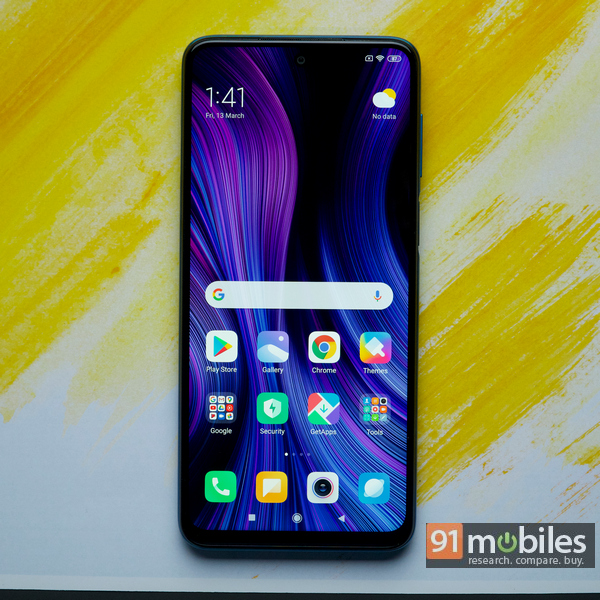
Verdict
There is definitely merit to the Redmi Note 9 Pro’s gigantic battery life and capable cameras. However, overlapping prices of the Note 9 Pro and the Note 9 Pro Max variants have made recommendations quite confusing. Throw into the mix the Realme 6 (review) which has arguably better specs on paper and things become even more confusing.
That design tho’…
It’ll be an understatement for me to say that I’m impressed with the ‘Aura Balance’ design philosophy implemented on the Redmi Note 9 Pro. I was a fan even of the Redmi Note 7 Pro (review) back in February last year and of the Redmi Note 5 Pro (review) the year before that. Redmi phones, for me, have consistently excelled in showing off its devices as eye candy, at least more than what the price tag demands. It’s not every day that you see phones under Rs 15,000 sporting Corning Gorilla Glass 5 protection on both the front and back. We have received the Aurora Blue variant for review purposes and let me tell you that it is nothing short of breathtaking. I have recently become quite bored with the repetitive dual-tone gradient finishes or even prism-like reflections of polycarbonate backs. However, the extremely bright glass back of the Note 9 Pro throws different shapes at you whenever light is cast on it. The design cues are very similar to the Note 8 Pro but in the case of the Note 9 Pro, the glass back makes for much more aesthetically pleasing appeal. Redmi has also changed its positioning of the quad-camera system, opting for a Huawei Mate 20 Pro-like matrix implementation, although for the Note 9 Pro the array is positioned at the top centre of the phone and also acquires less surface area than the Huawei Mate 20 Pro (review). The camera bump, which is covered in Gorilla Glass 5, is also quite significant which tends to make phone wobble on a flat surface.
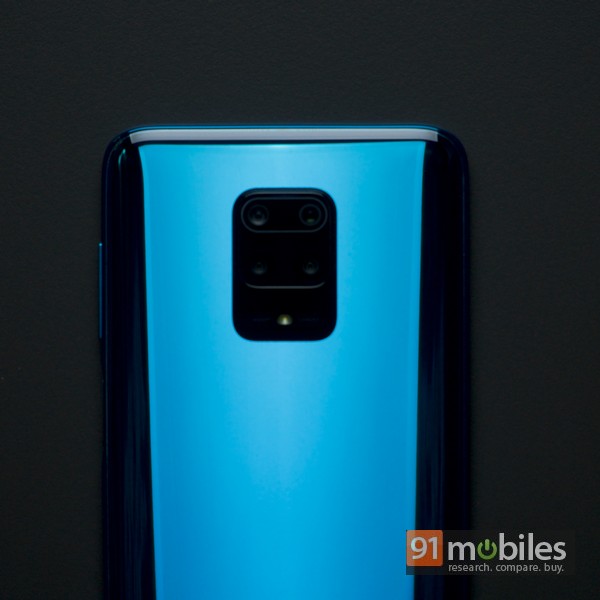
Other design elements include a side-mounted capacitive fingerprint sensor that has been integrated with the power button, like the POCO X2 (review). Above it is the volume rocker buttons and on the top of the phone is an IR blaster. The phone’s bottom houses the Type-C port, speaker grille, and the 3.5mm headphone jack. There is a certain extra weight on the Note 9 Pro which can be attributed to the beefy 5,020mAh battery packed into the phone. However, the curved glass on the back makes for good grip even if it is the biggest fingerprint magnet I’ve ever seen.

Like many other Note-series phones before it, the Redmi Note 9 Pro features P2i splash-proof nano-coating technology which should prevent any small water-related damage such as using the phone in light rain and more. The Redmi Note 9 Pro also offers the option of expandable storage alongside dual-SIM cards, a feature that was introduced first in the Note 8 Pro. Xiaomi has also touted the haptic capabilities with the Z-axis motor though in my usage of the device I was not mightily impressed.

Un-refreshing display
The Note series never had an extraordinary display to boast off. It was a screen that seemed suitable for the price it was being marketed at. POCO and Realme have changed the rules for budget phones by introducing 120Hz and 90Hz screens, thereby giving a much wider audience access to the wonders of a high refresh rate panel. I would’ve expected Xiaomi to move step-by-step with its competition even if the company is no more an industry trendsetter like it has always been before. Alas, I’ve been let down. While there is nothing categorically wrong with a 60Hz panel, putting the Note 9 Pro against a similarly-priced Realme 6, gives the perception of smoother performance in the latter. Even so, the support for high refresh rate content is considerably limited right now so I won’t hold it against Xiaomi for the time being.
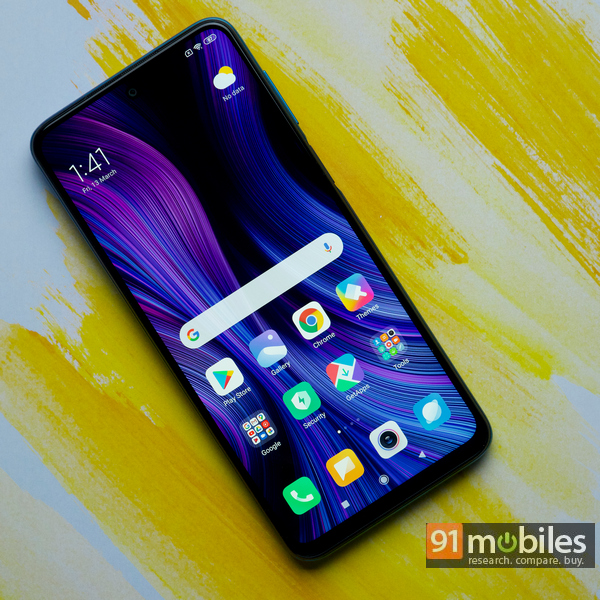
As a viewing companion though there is really nothing to nitpick on the Note 9 Pro. It is a standard IPS LCD display with decent viewing angles, good contrast ratio, punchy colours (slightly oversaturated), and impressive brightness levels. This is also the very first Xiaomi phone in India to come with a hole-punch display but since nearly every other phone has implemented it before, there is nothing special to write about it other than the fact it is slightly bigger than what I’ve come to expect and also is positioned at the top centre, like the Galaxy Note 10-series.
Cameras are impressive
I’ll be honest, when I first laid my eyes on the images clicked by the Redmi Note 9 Pro, I was not impressed. At the time, there appeared to be some focussing issues during low light and extreme smoothening of details. However, over time when I started using it in more varied lighting scenarios indoors and outdoors, I have started to straight-up love the phone’s camera. Let’s talks specs first, the phone’s primary camera is a 48MP Samsung ISOCELL GM2 sensor which is the upgraded version of the GM1 sensor that many previous year’s phones had. Xiaomi has undoubtedly put more faith in the GW2 rather than the 64MP GW1 sensor on the Redmi Note 8 Pro. While the pixel count has been reduced from the Note 8 Pro to the Note 9 Pro, I would’ve to say the image quality has definitely improved.
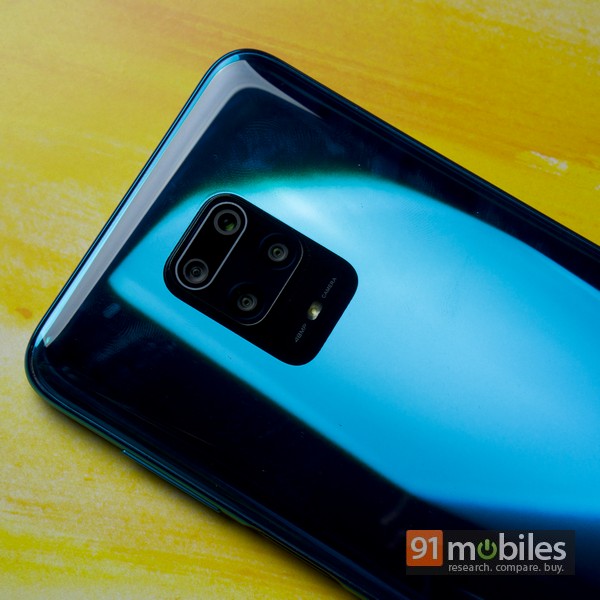
Redmi has always been one to click true-to-life colours as compared to its competitors and the Redmi Note 9 Pro conforms to that reality. Details have constantly remained on the higher side and they become even more pronounced when using the 48MP mode. Exposure tended to be a problem when the sun was shining right on the sensor and I had to manually adjust the exposure meter to get a good shot. Otherwise, Note 9 Pro has an impressive dynamic range and colour management capabilities. There is no unnecessary AI colour boosting technology like some Realme and Vivo phones, giving a much more natural feel to the photos. Autofocus is also up to the mark although there have been times when the lens could not detect the subject in which case I had to tap to focus.
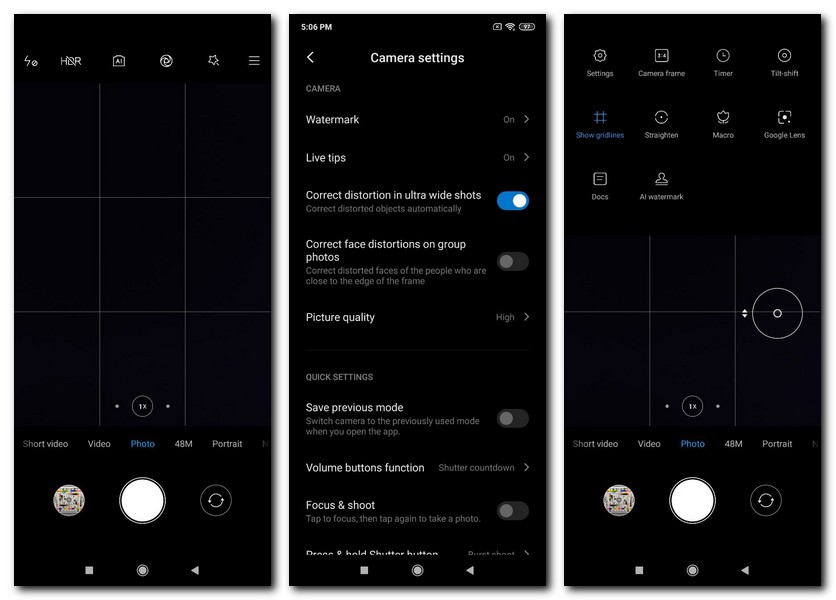
I also also very impressed with the phone’s night-time photo capabilities. In indoor scenarios where there is about sufficient lighting, the sensor captures detailed photos with good exposure handling. Outdoors can be a bit of a roll of the dice depending on how good the lighting is or how far away the subject is. In general, buildings, trees or any landmark in general with decent enough street lighting produce a great photo. When the light source drops, the sensor takes longer to click photos which may sometimes result in blurriness. As a whole though, the imaging team at Xiaomi has done a commendable job with the Note 9 Pro camera’s night capabilities. At least for the price of the phone.
Lest we forget, there are also other cameras at play on the Note 9 Pro, albeit none as impressive as the main camera. We have an ultra-wide lens with 8MP resolution and a 120-degree field of view. It is a run-of-the-mill sensor with definitely the capability of fitting more into the frame than the primary sensor but it comes at the cost of detailing and skewed colour temperatures, which is to be expected given the smaller sensor size. There is a 5MP dedicated macro lens which is good only when there is a ton of light but it is impressive that it has a focal length starting from 2cm which means you can go in much closer to the subject than many other competitors. Lastly, there is a 2MP depth sensor that works as advertised for better depth detection for bokeh shots.

The selfie shooter is a 16MP lens housed in the singular punch hole on the front. I wouldn’t put to much weight on the front camera which is about as good as any other OEM out there but I will say that unlike Realme, the Redmi Note 9 Pro employs a high level of face smoothening. It does compensate it by adjusting the exposure satisfactorily and providing a good AI-based bokeh.
I should also mention something that might be of importance to those who shoot a lot videos. The Note 9 Pro has the ability to shoot log format videos which basically means that the footage will be much easier to edit. For the uninitiated, log format means that there is a lot more date per pixel to play around with while editing a video. Shooting in log also increases the tonal range of the sensor. Currently both the Note 9 Pro and Note 9 Pro Max are the only devices that support this video format.
Is it really a performance beast?
PUBG Mobile running capabilities have become a benchmark for testing chipset performance over the past year or so. This method becomes more pronounced when we consider the Snapdragon 720G chipset which has been marketed for efficient gaming at a budget. There is however a catch which is apparent only when playing this insanely popular battle royale game. It would seem that the Snapdragon 720G locks out the game at only high graphics settings as opposed to the Redmi Note 8 Pro’s MediaTek G90T chipset which allows user to amp the settings all the way to extreme. What this means is that the Note 9 Pro will only allow you to play the game at 45 fps instead of the much smoother 60 fps as seen on the Note 8 Pro, a device launched six months back.

However, what some people might have missed out on is the fact that the Snapdragon 720G is based on an 8nm manufacturing process as compared to the G90T’s 12nm manufacturing. As such the former has better thermal management and power consumption than the latter. I have personal experience of facing heating issues on the Note 8 Pro during my review of the device. In real-world usage, there is not going to be any significant difference in performance. Both the chipsets are still going to handle heavy app load just about fine and while the 4GB RAM starting option may not be enough to keep a heavy-duty game like PUBG Mobile open for long, apps like Facebook, Instagram and more should work just fine. In short, the Note 9 Pro nor the Note 9 Pro Max are what you would call ‘Performance beasts’ which is what the company has marketed them as.
Authentication-wise the Redmi Note 9 Pro has the capacitive fingerprint sensor embedded in the power button on the side and face authentication. Like many other capacitive sensors, the Note 9 Pro also has super-fast response time with the device unlocking instantly when my thumb touches it. Face authentication is a little hard to settle for, which was surprising since previous Redmi phones have had near flawless face unlock mechanisms. Perhaps it is something that can later be improved via a software update.
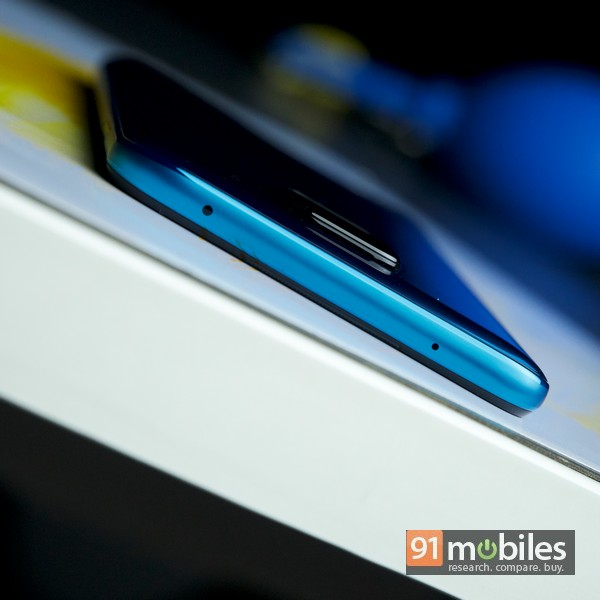
It is also prudent to mention here that the Redmi Note 9 Pro can use India’s NavIC satellite for navigation rather than the conventional GPS. In a nutshell, it is claimed that NavIC has better accuracy and penetration than GPS although we have found no conclusive metric to test this. All Snapdragon 720G and 865 chipset phones will be compatible with the NavIC satellite.

On the software side of things we are looking at Android 10-based MIUI 11 skin which looks to be a significant improvement over the MIUI 10 skin that I’ve used on the Redmi Note 8 Pro. Apart from UI changes, the new skin brings in new icons, a system-wide dark mode, always-on display, new wallpapers and more. Several Xiaomi devices which include the Redmi 8 (review) and Note 8-series of last year are getting or have gotten the update. Even so, bloatware is still aplenty on the device such as apps like Xiaomi Weather, Xiaomi Health, and something called Zilli. Quite a few of these apps cannot be uninstalled which adds to my frustration. Also, there is no app drawer which is personally my biggest complaint from MIUI. Otherwise, the themes and general interactiveness of the skin is decent enough. There are options to customise themes and launchers and also to modify actions happening with different gestures.
Battery life is out of the world!
If there is something that the Redmi Note 9 Pro has nailed to perfection it is undoubtedly the battery life on the device. With a thickness which is nearly the same as the Note 8 Pro, the Note 9 Pro has crammed in a larger 5,020mAh battery to take care of all your power needs. It is the biggest battery of any Redmi smartphone and our regular battery test showed that the Note 9 Pro lasted nearly 28 hours, a figure no Redmi phone has ever achieved before. Real-world usage has seen me charge the phone once every two days which speaks volumes about the device’s battery life. The support for charging such a massive battery is 18W, which in itself is not bad but falters when compared to the 30W charging on the Realme 6. As it stands it takes about 80 minutes to charge the phone from zero to 100 percent.
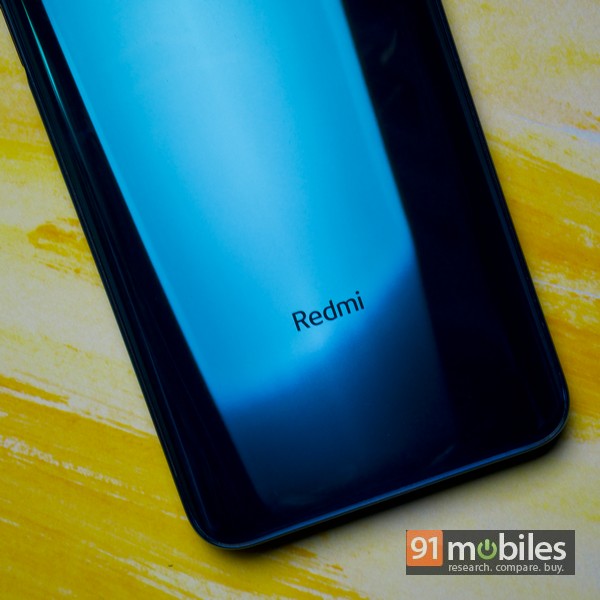
Final Verdict
We are living in confusing times as far as the budget segment is considered. If there is one smartphone that is doing something right and something wrong there exists another smartphone which rectifies those wrongs but fails to match the right. In the Redmi Note 9 Pro and the Realme 6, we have a similar situation. While it could be a subjective matter, I’m personally a fan of Xiaomi’s design philosophy and I’d like to think that many people will agree when I say that the Note 9 Pro oozes that extra bit of premium-ness as compared to the overused design philosophy in the Realme 6.
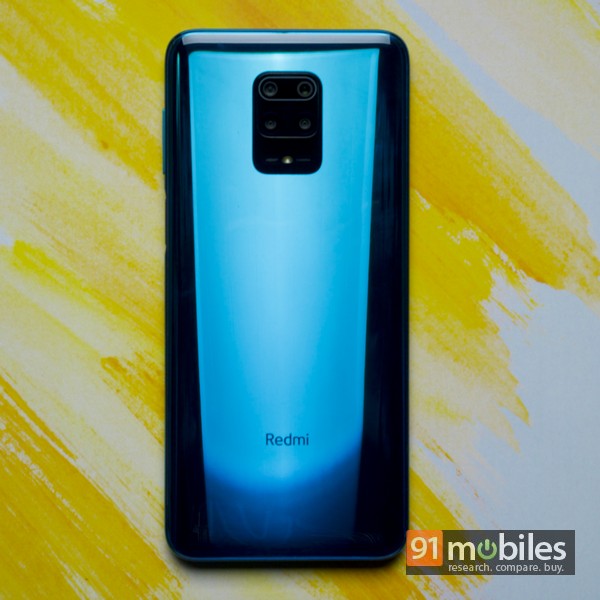
The display department is hands down an area where Realme 6 takes the crown thanks to its 90Hz panel. Gaming is also an area where the Realme 6’s MediaTek chipset is notch above the Note 9 Pro’s Snapdragon 720G. However, as far daily usage goes both chipsets perform more-or-less the same, with the 720G edging out in power efficiency thanks to a smaller manufacturing process. Cameras are a roll of the dice with the Redmi Note 9 Pro producing true-to-life colours which could appear slightly dull in comparison to Realme 6’s saturation. The former however has the ability to record videos in log format which would make it easier to edit. The Note 9 Pro has a bigger battery but slower charging while the Realme 6 has a smaller battery but faster charging. In the run of things, most people would prefer the former option.
I guess you could say that people who wish to invest in a premium-looking phone with a good camera and battery should opt-in for the Redmi Note 9 Pro. Others with a keen interest in gaming aided by a high refresh rate screen and faster charging should consider the Realme 6. Then there is fact that the 6GB RAM + 128GB storage variant of the Note 9 Pro is just Rs 1,000 cheaper than the better-suited Note 9 Pro Max with the same configuration. Poco X2 also has something to offer in its 120 Hz refresh rate display at Rs 15,999. However, if you happen to be on a tight budget with no focus on gaming then the entry-level Note 9 Pro should serve you nicely.
Editor’s rating: 4 / 5
Pros:
- Stellar design
- Amazing battery life
- The primary camera is quite good
Cons:
- Gaming is weaker than Realme 6’s MediaTek G90T
- Pricing is confusing
 Xiaomi Redmi Note 9 Pro Xiaomi Redmi Note 9 Pro | vs |  Samsung Galaxy M31 Samsung Galaxy M31 |
 Xiaomi Redmi Note 9 Pro Xiaomi Redmi Note 9 Pro | vs |  realme 6 realme 6 |




































